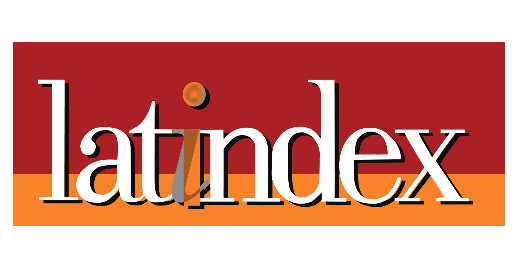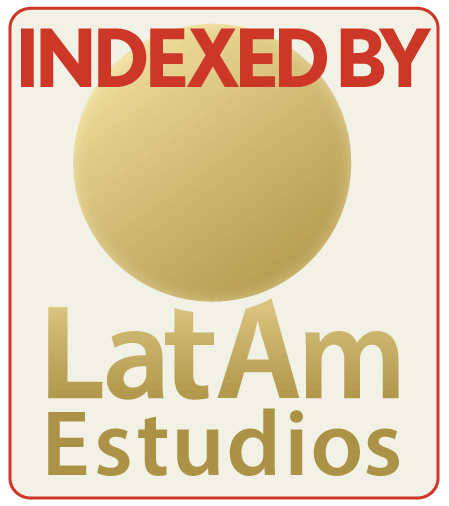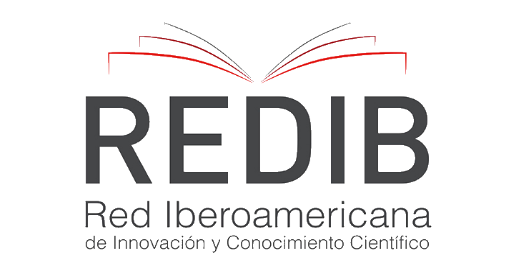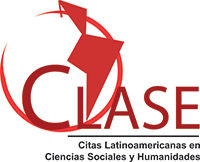Indicadores ambientais como indicadores indiretos de Corrupção: Uma abordagem econométrica para o crescimento econômico no México
##plugins.themes.bootstrap3.article.main##
Este estudo avalia a relação entre corrupção e indicadores ambientais, especificamente a densidade de árvores e o Índice de Vegetação por Diferença Normalizada (NDVI), nos estados do México.
Um modelo de regressão Ridge Cross-Validation (RidgeCV) foi aplicado para mitigar a multicolinearidade e corrigir a endogeneidade. O conjunto de dados inclui dados econômicos e ambientais de 32 estados do México. Os resultados mostram que a densidade de árvores está negativamente correlacionada com a atividade econômica, enquanto o NDVI tem um impacto marginalmente positivo. Essas descobertas sugerem que o desmatamento pode ser impulsionado por fatores econômicos e de governança, destacando o papel da degradação ambiental como um indicador de corrupção. Este trabalho contribui para a economia institucional, fornecendo evidências empíricas para o desenvolvimento de políticas públicas sustentáveis e aprimorando a mensuração da corrupção por meio de indicadores ambientais.
Downloads
##plugins.themes.bootstrap3.article.details##
Acemoglu, D., & Robinson, J. A. (2012). Why nations fail: The origins of power, prosperity, and poverty. Random House.
https://doi.org/10.1355/ae29-2j
Bakhsh, S., & Ahmed, V. (2022). Environmental degradation, corruption, and economic growth: Evidence from Asian economies. Environmental Science and Pollution Research, 29, 32687-32704.
Brondízio, E. S., Aumeeruddy-Thomas, Y., Bates, P., Carino, J., Fernández-Llamazares, Á., Ferrari, M. F., & Shrestha, U. B. (2021). Locally based, regionally manifested, and globally relevant: Indigenous andlocal knowledge, values, and practices for nature. Annual Review of Environment and Resources,46(1), 481-509.
https://doi.org/10.1146/annurev-environ-012220-012127
Buehn, A., & Lessmann, C. (2021). Fiscal decentralization and corruption: New evidence from broad panel data. Kyklos, 74(4), 578-604.
Burgess, R., Hansen, M., Olken, B. A., Potapov, P., & Sieber, S. (2012). The political economy of deforestation in the tropics. The Quarterly Journal of Economics, 127(4), 1707-1754.
https://doi.org/10.1093/qje/qjs034
Burki, S. J., & Perry, G. E. (1998). Beyond the Washington consensus: Institutions matter. World Bank Publications.
https://doi.org/10.1596/0-8213-4282-7
Chazdon, R. L. (2008). Restoring forests and ecosystem services on degraded lands. Science, 320(5882), 1458-1460.
https://doi.org/10.1126/science.1155365
D'Agostino, G., Dunne, J. P., & Pieroni, L. (2016). Government spending, corruption and economic growth. World Development, 84, 190-205.
https://doi.org/10.1016/j.worlddev.2016.03.011
Dell, M. (2010). The persistent effects of Peru's mining mita. Econometrica, 78(6), 1863-1903.
https://doi.org/10.3982/ECTA8121
Dong, B., & Torgler, B. (2020). Corruption and social trust: The mediating role of institutional quality and the moderating role of income inequality. European Journal of Political Economy, 63, 101882
Drury, A. C., Kieckhaus, D., & Lusztig, M. (2006). Corruption, democracy, and economic growth. International Political Science Review, 27(2), 121-136.
https://doi.org/10.1177/0192512106061423
Food and Agriculture Organization of the United Nations (FAO). (2020). The state of the world's forests 2020: Forests, biodiversity, and people. FAO.
Gründler, K., & Potrafke, N. (2019). Corruption and economic growth: New empirical evidence. European Journal of Political Economy, 60, 101-115.
https://doi.org/10.1016/j.ejpoleco.2019.08.001
Gupta, S., Davoodi, H., & Alonso-Terme, R. (1998). Does corruption affect income inequality and poverty? IMF Working Paper No. 98/76. International Monetary Fund.
https://doi.org/10.5089/9781451849844.001
Huntington, S. P. (1968). Political order in changing societies. Yale University Press.
INEGI. (2023). Encuesta Nacional de Calidad e Impacto Gubernamental (ENCIG). Instituto Nacional de Estadística y Geografía. https://www.inegi.org. mx/programas/encig/2023/
Kudamatsu, M., Persson, T., & Stroebel, J. (2012). Weather and infant mortality in Africa. American Economic Review, 102(4), 1915-1948.
Leff, N. H. (1964). Economic development through bureaucratic corruption. American Behavioral Scientist, 8(3), 8-14.
https://doi.org/10.1177/000276426400800303
Mauro, P. (1995). Corruption and growth. The Quarterly Journal of Economics, 110(3), 681-712.
https://doi.org/10.2307/2946696
Mbow, C., Smith, P., Skole, D., Duguma, L., & Bustamante, M. (2014). Achieving mitigation and adaptation to climate change through sustainable agroforestry practices in Africa. Current Opinion in Environmental Sustainability, 6, 8-14.
https://doi.org/10.1016/j.cosust.2013.09.002
Meón, P. G., & Weill, L. (2010). Is corruption an efficient grease? World Development, 38(3), 244-259.
https://doi.org/10.1016/j.worlddev.2009.06.004
Monroe, M. C. (2003). Two avenues for encouraging conservation behaviors. Human Ecology Review, 10(2), 113-125.
Olken, B. A. (2007). Monitoring corruption: Evidence from a field experiment in Indonesia. Journal of Political Economy, 115(2), 200-249.
https://doi.org/10.1086/517935
Paldam, M. (2002). The cross-country pattern of corruption: Economics, culture and the seesaw dynamics. European Journal of Political Economy, 18(2), 215-240.
https://doi.org/10.1016/S0176-2680(02)00078-2
Pagiola, S. (2008). Payments for environmental services in Costa Rica. Ecological Economics, 65(4), 712-724.
https://doi.org/10.1016/j.ecolecon.2007.07.033
Pettorelli, N., Vik, J. O., Mysterud, A., Gaillard, J. M., Tucker, C. J., & Stenseth, N. C. (2005). Using the satellite-derived NDVI to assess ecological responses to environmental change. Trends in Ecology & Evolution, 20(9), 503-510.
https://doi.org/10.1016/j.tree.2005.05.011
Rose-Ackerman, S. (1975). The economics of corruption. Journal of Public Economics, 4(2), 187-203.
https://doi.org/10.1016/0047-2727(75)90017-1
Secretaría de Medio Ambiente y Recursos Naturales (SEMARNAT). (2020). Ley General de Desarrollo Forestal Sustentable. https://www.gob.mx/ semarnat/documentos/ley-general-de-desarrolloforestal- sustentable
Stavins, R. N. (2000). Market-based environmental policies. Public Economics Review, 12(2), 243-265.
https://doi.org/10.4337/9781035363155
Transparency International. (2020). What is corruption? https://www.transparency.org/en/what-iscorruption Transparency International. (2023). Corruption
perceptions index 2023. https://www.transparency. org/en/cpi/2023/
Voskanyan, F. (2000). A study of the effects of corruption on economic and political development. Centre for Strategic and International Studies. https:// csis.org/publication/study-effects-corruptioneconomic- and-political-development
Lember, V., Kalvet, T., & Kattel, R. (2014). Public sector innovation: Case studies and research perspectives. Public Management Review, 16(1), 23-30.
https://doi.org/10.1007/978-3-642-40258-6_1
Millan-Lopez, A. J. (2024). Corrupción institucional observada desde el espacio. Sobre México Temas de Economía, 9(1), 55-82.
https://doi.org/10.48102/rsm.v1i9.146
World Bank. (2022). Worldwide governance indicators. https://info.worldbank.org/governance/wgi/
Zhang, J., & Daly, K. (2021). Corruption, innovation and economic growth: Evidence from emerging and developing countries. Economic Systems, 45(4), 100888.


































